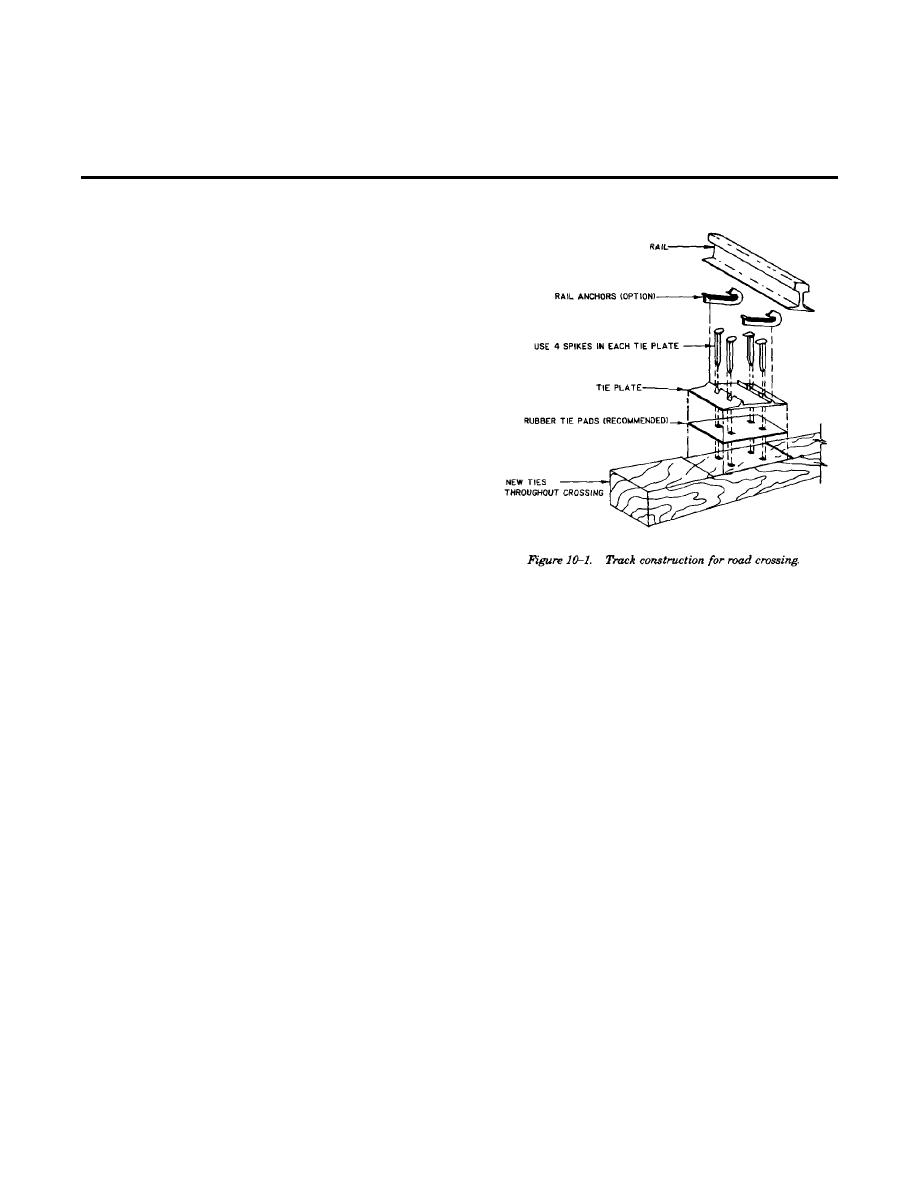
TM 5-628/AFR 91-44
CHAPTER 10
ROAD CROSSINGS
10-1. Drainage.
tory long-term performance of the track and road
crossing.
b. Water shall not be allowed to pond on or
near the track at a road crossing.
c. Catch-basins, gutters, ditches, subdrains, and
culverts should be properly installed and kept free
of debris.
10-2. Flangeways.
a. Flangeway width. For normal operations,
flangeway width in a road crossing shall not be less
than 2 (2.50) inches nor greater than 3 (3.00)
inches.
(1) If the flangeway width is less than 1
(1.7 5) inches, operations through the crossing shall
not exceed 10 mph.
(2) No operations shall be permitted
through any crossing where the flangeway width is
1 (1.50) inches or less.
b. Flangeway depth. For normal operations,
c. Joints. Bolted rail joints are not desirable in
the flangeway depth in a road crossing shall not be
road crossings. When crossings are rebuilt, it is
less than 2 (2.00) inches.
recommended that all joints within the crossing and
(1) If the flangeway depth is less than 1
up to 20 feet outside the crossing be welded.
(1.50) inches, operations through the crossing shall
not exceed 10 mph.
of the crossing is anchored, it is recommended that
(2) No operations shall be permitted
the anchoring pattern be continued through the
through any crossing where the flangeway depth is
crossing.
1% (1.375) inches or less.
10-4. Crossing surfaces and materials.
debris. Any obstructions, including ice and packed
a. It is essential that the crossing surface be
snow, shall be removed immediately.
maintained to provide a smooth crossing for vehi-
cles and to prevent vehicle tires from striking the
10-3. Track.
rails. The crossing surface shall be maintained at an
elevation level with or slightly (not more than
are rebuilt, all ties within the crossing limits and for
inch) above the top of the rails. Additionally, there
at least 20 feet beyond each end of the crossing
shall be a smooth transition between the crossing
shall be replaced, fully tie plated, and spiked with
surface and the adjoining pavement.
eight rail-holding spikes on each tie. (See fig 10-1)
b. During routine track inspections the inspec-
For road crossings carrying large volumes of traffic
tor should take note of the general condition of the
and/or heavy loads, the use of hardwood ties is
crossing materials and report any damage or con-
recommended.
dition requiring repair or replacement. Any condi-
tion observed in a road crossing which would cause
recommended that rubber tie pads be installed be-
a hazard to motor vehicles using the crossing
tween the tie and tie plate on all ties within the
should be corrected immediately.
crossing area and for at least 20 feet beyond each
end of the crossing.
10-1


 Previous Page
Previous Page
